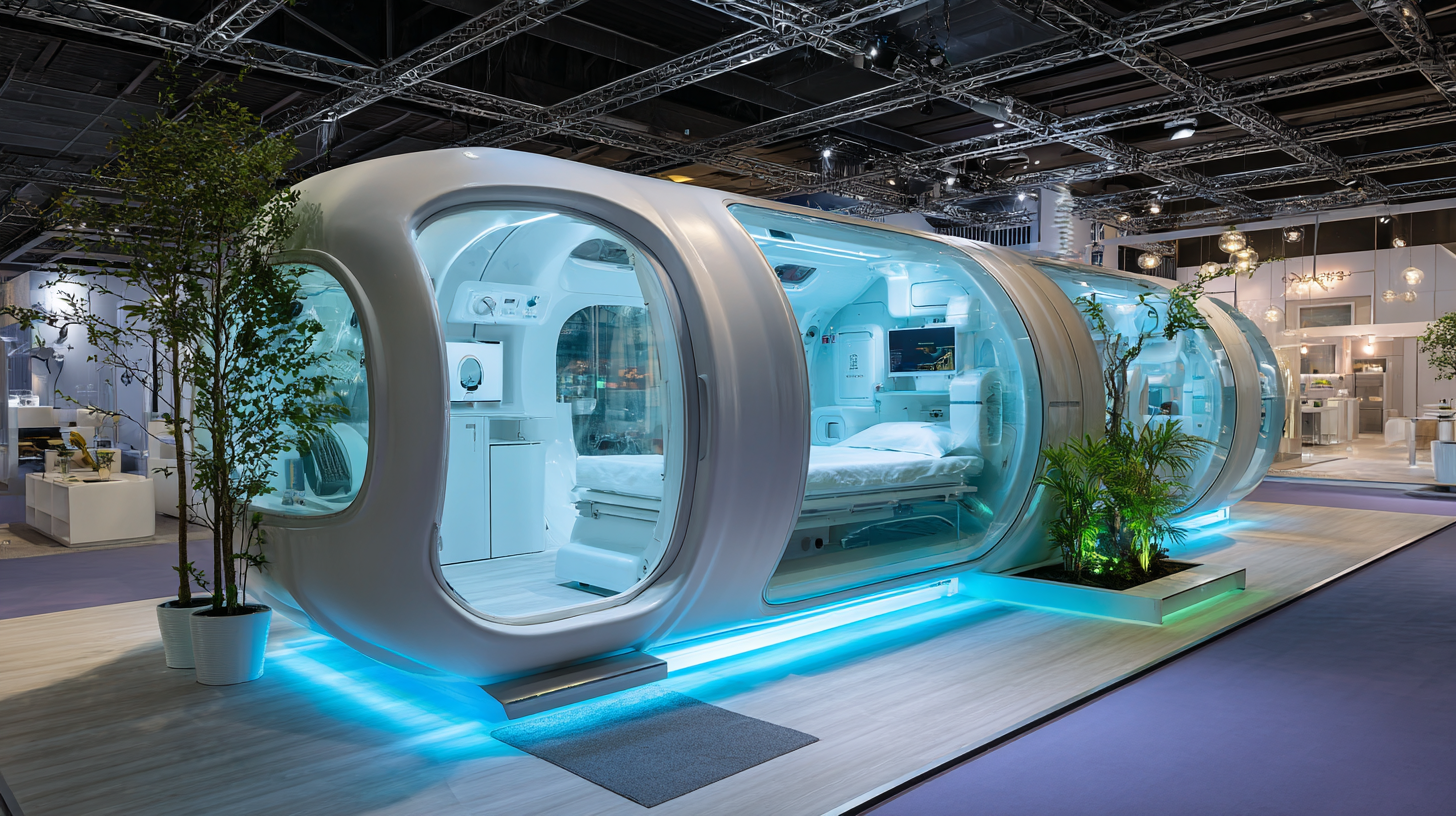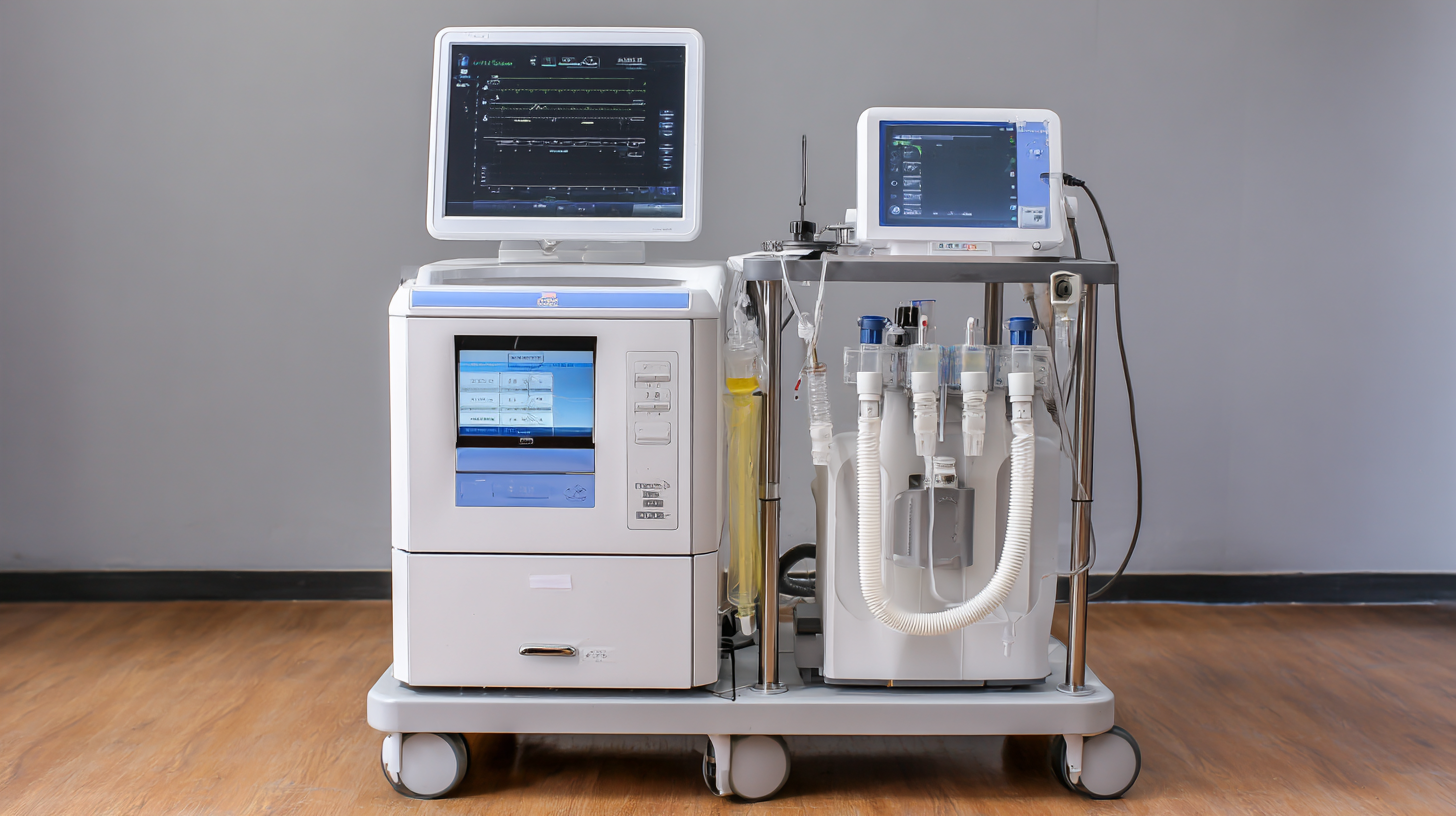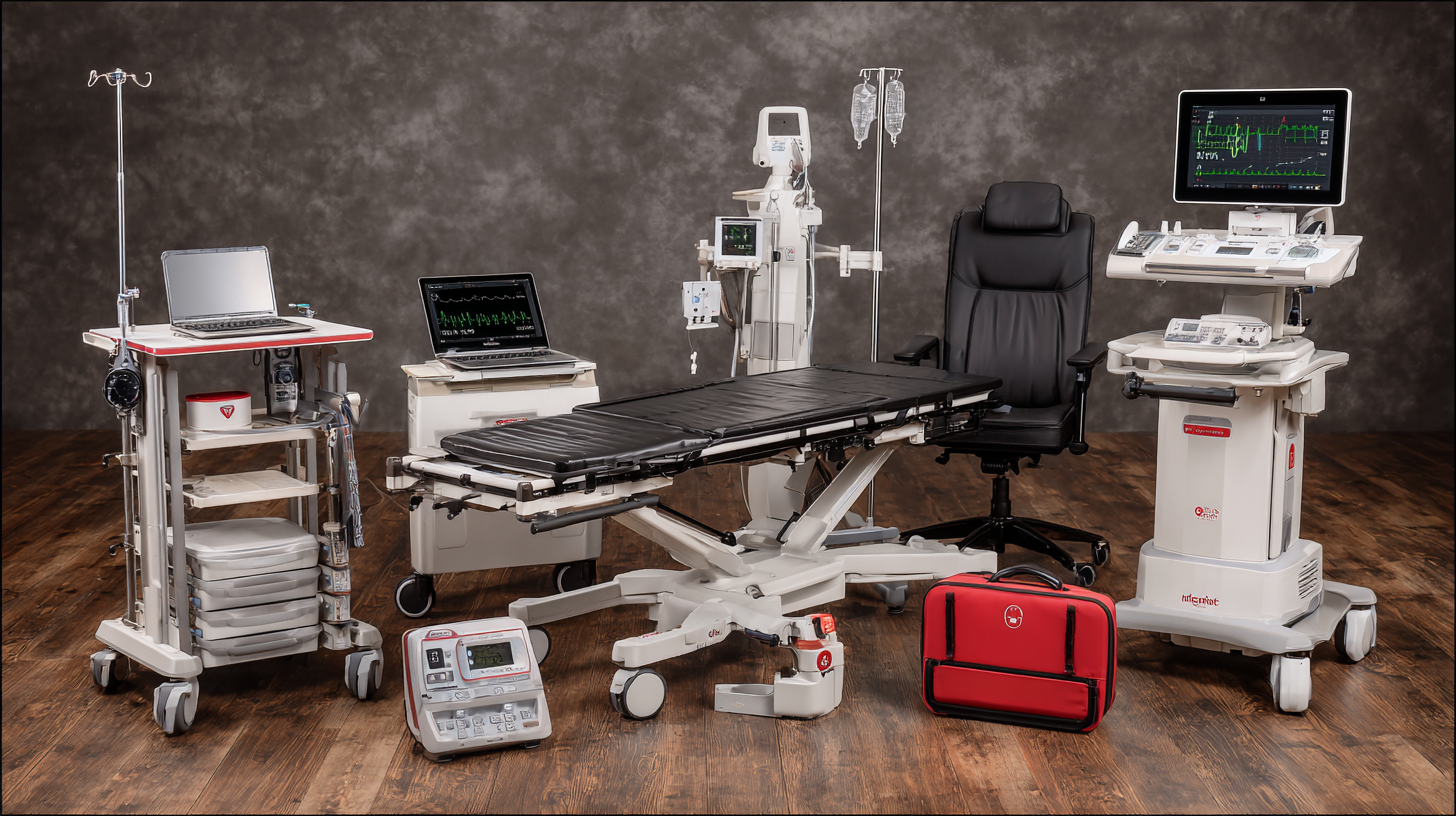Exploring Innovative Alternatives: Best Home Medical Equipment for Global Buyers
In a rapidly evolving healthcare landscape, the demand for Home Medical Equipment (HME) is witnessing unprecedented growth, fueled by an aging population and the increasing prevalence of chronic diseases. According to a report by Grand View Research, the global home healthcare market is expected to reach USD 396.8 billion by 2027, growing at a CAGR of 7.9%. This surge underscores the critical need for innovative alternatives to traditional medical equipment, particularly for global buyers seeking reliable solutions for at-home care. As we explore the best home medical equipment options available, it becomes essential to highlight products that not only enhance patient comfort but also promote independence and improve quality of life. This ultimate guide aims to provide valuable insights into the latest trends, key players, and innovative technologies that are reshaping the home healthcare industry, enabling consumers to make informed decisions tailored to their unique needs.

The Rising Demand for Home Medical Equipment in Global Markets
The rising demand for home medical equipment has become evident across global markets, driven by factors such as an aging population and the increasing prevalence of chronic diseases. According to a report by Grand View Research, the global home medical equipment market size was valued at approximately $34 billion in 2022 and is expected to expand at a compound annual growth rate (CAGR) of 7.4% from 2023 to 2030. This surge is largely influenced by the growing preference for home healthcare services, particularly in regions with limited access to hospitals and healthcare facilities.
Furthermore, the COVID-19 pandemic has accelerated the shift towards home-based care, prompting healthcare providers to adapt their services. The World Health Organization forecasts that by 2030, the number of people aged 60 years and older will reach 1.4 billion, emphasizing the need for more accessible home medical solutions. Products like remote patient monitoring devices, mobility aids, and diagnostic tools have witnessed heightened demand. Notably, a report by MarketsandMarkets predicts that the telehealth market alone could reach $559.52 billion by 2027, reflecting a significant transition in how healthcare is delivered.
These trends underscore the necessity for innovative alternatives that cater to the diverse needs of global buyers seeking effective home medical equipment solutions.
Understanding the Benefits of Telehealth-Enabled Medical Devices for Patients
The rise of telehealth-enabled medical devices is transforming the landscape of home healthcare, offering unparalleled convenience and personalization for patients. As the telehealth market expands, driven by key players focusing on innovative solutions, patients are now able to access a range of medical services from the comfort of their own homes. This shift highlights the importance of technology not only in improving access to care but also in enhancing the overall patient experience.
In 2023, the telehealth market share is indicative of its vital role in the healthcare ecosystem, with approximately 40% attributed to companies prioritizing convenience and tailored services. Devices such as remote monitoring tools, diagnostic kits, and therapeutic equipment empower individuals to manage their health proactively. Patients can track their health metrics in real-time and receive immediate feedback from healthcare professionals, reducing the need for frequent office visits and streamlining the management of chronic conditions. This personalized approach not only improves health outcomes but also fosters a greater sense of autonomy among patients.
Exploring Innovative Home Medical Equipment
This chart illustrates the estimated number of users, in millions, for various telehealth-enabled medical devices. As telehealth continues to grow, understanding the adoption rates of these devices is crucial for global buyers.
Cost-Effectiveness of Home Medical Equipment in Chronic Disease Management
In today's global market, the cost-effectiveness of home medical equipment has become increasingly crucial for managing chronic diseases. Patients managing conditions such as diabetes, hypertension, or COPD can benefit significantly from at-home tools like blood glucose monitors, compression therapy devices, and portable oxygen concentrators. These products not only reduce the frequency of hospital visits but also empower patients to take control of their health, leading to improved outcomes and lower overall healthcare costs.

Tip: When selecting home medical equipment, always consider the total cost of ownership. This includes not only the initial purchase price but also maintenance, consumables, and potential replacement costs over time. Investing in high-quality, durable products can yield long-term savings.
Moreover, the accessibility of innovative technologies, such as telehealth services and smart medical devices, allows for better monitoring and management of chronic conditions. These advancements enable healthcare providers to offer personalized care plans while staying connected with patients remotely.
Tip: Research available financial assistance programs or insurance coverage options to alleviate the costs associated with acquiring home medical equipment. Many healthcare providers can guide you through this process to ensure you maximize your benefits.
Innovative Mobility Aids: Enhancing Independence and Quality of Life
In today's world, mobility aids play a crucial role in enhancing both independence and quality of life for individuals facing physical challenges. Innovative designs and technologies have transformed the types of equipment available, catering to the diverse needs of users. From lightweight wheelchairs to advanced walking aids, these devices not only improve mobility but also empower users by providing them with the freedom to navigate their environments confidently.
One notable advancement in mobility aids is the integration of smart technology. Many modern devices now feature built-in sensors and connectivity options that allow for seamless communication with caregivers and family members. This not only enhances the user experience but also ensures a safer environment by enabling real-time monitoring. Furthermore, ergonomic designs and customizable settings are becoming standard, allowing users to tailor their equipment to suit their individual preferences and lifestyle, ultimately fostering a greater sense of autonomy.
As the demand for home medical equipment grows globally, these innovative mobility aids stand at the forefront, redefining what it means to live independently. They symbolize a commitment to improving accessibility and empowerment, ensuring that everyone can enjoy a higher quality of life regardless of their physical limitations.
Exploring Innovative Alternatives: Best Home Medical Equipment for Global Buyers - Innovative Mobility Aids: Enhancing Independence and Quality of Life
| Type of Equipment | Features | Benefits | Price Range (USD) |
|---|---|---|---|
| Power Wheelchair | Electric, adjustable seating, lightweight | Increased mobility, easy maneuverability | $2,000 - $5,000 |
| Walking Aids | Foldable, height adjustable, ergonomic grips | Improved stability, reduced fall risk | $50 - $300 |
| Lift Chairs | Reclining, heated, lift assistance | Ease of standing, comfort | $800 - $3,000 |
| Mobility Scooters | Compact design, long battery life, adjustable speed | Independent outdoor mobility, easy transportation | $1,200 - $4,500 |
| Bathroom Safety Equipment | Grab bars, shower chairs, non-slip mats | Enhanced safety, reduced risk of injuries | $30 - $500 |
Evaluating the Impact of Home Monitoring Systems on Patient Outcomes and Healthcare Costs
The rise of home monitoring systems is transforming the landscape of patient care, particularly in the realm of chronic disease management. Recent studies have shown that innovative follow-up strategies, such as remote monitoring coupled with patient engagement, can effectively maintain low disease activity in patients with axial spondyloarthritis over an 18-month period. This approach contrasts traditional in-person follow-ups, demonstrating not only the feasibility of remote solutions but also their potential in improving patient outcomes while minimizing healthcare costs.

As the home healthcare services market in the United States is projected to experience significant growth—reaching an estimated $176.3 billion by 2032—there is an increasing emphasis on equipping patients with effective home medical equipment. Technologies like continuous glucose monitors and blood pressure monitors are becoming critical in empowering patients to take charge of their health. The shift toward at-home care is evident at major events like the China International Import Expo, where new medical innovations are showcased, indicating a global trend towards integrating advanced medical technology into everyday home health management. This transition not only alleviates pressure on healthcare facilities but also fosters a proactive healthcare system where patients are more informed and engaged in their care journey.
